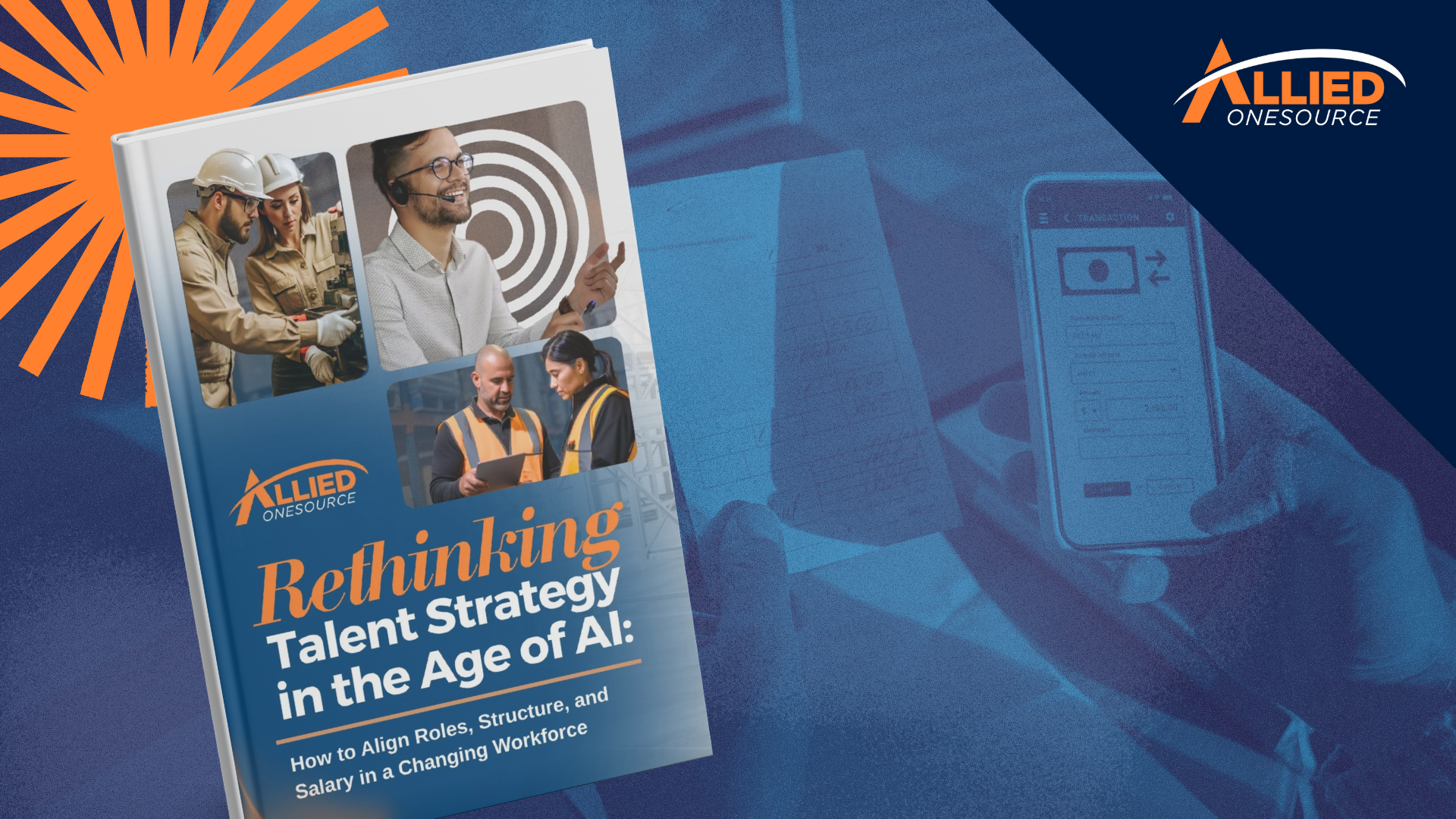The Rise of Sabbaticals: A Strategy for Employee Well-being and Retention
You've seen it before; a top employee suddenly quits, saying they're burned out and need a break. Now you must scramble to replace them while the rest of your team feels the impact. Your company isn’t alone as nearly half of U.S. employees say they feel burned out by the end of their workday.¹ This leads to lower productivity, less engagement, and higher turnover.
That's why more companies now offer sabbaticals. These extended breaks let employees step away, recharge, and return refreshed. Once mainly used in education, sabbaticals now help businesses keep their best talent.
Companies that offer them see higher retention, stronger employee loyalty, and a better reputation with job seekers. When keeping top talent matters most, sabbaticals make good business sense.
What Are Employee Sabbaticals?
In the corporate world, sabbatical leave is an extended break that
lets employees take time away from work for personal or professional growth. Unlike regular vacations, which are short and meant for rest, sabbatical leave offers a chance to recharge, learn new skills, or explore personal interests. Employees often come back more engaged, satisfied, and committed to staying with the company long-term.
Types of Sabbaticals
- Paid vs. Unpaid: Some companies cover all or part of an employee’s salary during a sabbatical leave, while others offer unpaid leave. Paid sabbaticals make it easier for employees to take time off without financial stress, whereas unpaid ones require more planning and savings.
- Structured vs. Unstructured: Some sabbaticals come with a plan, like professional development, volunteering, or skill-building programs. Others are completely open-ended, letting employees decide how to spend their time.
- Length and Eligibility Criteria
Corporate sabbaticals usually last anywhere from a few months to a year, though some companies offer shorter options. They’re often tied to tenure, meaning employees need to have worked at the company for five to ten years before becoming eligible. This helps businesses use sabbaticals as an employee retention and employee wellbeing tool.
How Sabbaticals Differ from Other Time Off
Here’s what a sabbatical isn’t:
- A vacation: Vacations are short breaks from work that allow for full disconnection. Sabbatical leaves are much longer and often have a personal or professional purpose.
- Family or medical leave: These leaves are for caregiving or health-related needs, whereas sabbaticals focus on renewal and development.
- A career break: This usually involves leaving a company entirely, while a sabbatical ensures job security and a planned return.
Why Sabbaticals Are Gaining Traction
Employees today expect more from their jobs. They’re looking for wellness, flexibility, and a better work-life balance, not just a good pay check. To keep up, companies are rethinking their benefits, and sabbaticals are becoming a game-changer for attracting and keeping top talent.
Rising Burnout and Mental Health Concerns
Burnout is at an all-time high. A recent survey by the American Psychological Association found that 67 percent of workers experienced at least one sign of burnout in the previous month, including:
- Lack of interest, motivation, or low energy
- Feeling lonely or isolated
- A lack of effort at work²
Burnout doesn’t just impact employees, it hits businesses hard, too. It leads to lower productivity, more absences, and higher turnover. When employees are exhausted, they’re more likely to disengage, make mistakes, or start looking for a new job, costing companies valuable talent.
In the same vein, companies know that employees aren’t just workers, they’re long-term investments. Keeping great talent is much more cost-effective than constantly hiring and training new people. Offering sabbaticals sends a clear message: "We appreciate you, not just the work you do." As a result, employees stay more engaged, loyal, and productive.
Read More: World Mental Health Day 2023: Incentives and Programs to Drive Employee Well-Being
Companies Leading the Way
Several well-known companies have already embraced sabbaticals as a retention strategy:
- Adobe: Offers a four-week paid sabbatical after five years, allowing employees to travel, learn, or simply recharge.
- Patagonia: Provides two months of paid leave for employees to volunteer with environmental organizations.
- Deloitte: Offers two sabbatical options, one month or three to six months, which can be combined with PTO. Employees qualify for the shorter option after six months and the longer one after two years of continuous service.
The Business Case: Sabbaticals and Employee Retention
For companies that want to keep great employees, sabbaticals are a smart investment. Giving employees extended time off boosts job satisfaction, reduces burnout-related turnover, and strengthens long-term commitment.
The Cost of Turnover vs. Sabbaticals
Replacing an employee is expensive. Studies estimate that replacing an employee can cost anywhere from half to twice their annual salary.³ A well-planned sabbatical program costs much less in comparison. While there may be a temporary dip in productivity, the long-term benefits, lower turnover, higher engagement, and stronger loyalty, far outweigh the short-term expense.
Sabbaticals Strengthen Employee Engagement and Loyalty
Companies that offer sabbaticals enjoy more engaged and committed employees. Taking a break from daily tasks helps employees return refreshed, inspired, and even more productive. Many also gain new skills or perspectives, adding extra value to the company. Plus, when employees feel supported in their personal and professional growth, they’re much less likely to leave
Sabbaticals Enhance Employee Branding and Attract Top Talent
Sabbaticals show employees that their well-being and growth matter, making a company more appealing to top talent. In a competitive job market, a strong sabbatical program can set an employer apart, helping to attract and keep high-performing professionals.
Read More: 9 Wellness Initiatives for a Vibrant and Energized Workforce
Key Considerations in Designing an Effective Sabbatical Program
There are a few things to consider when designing a sabbatical program as part of your staff retention strategies. Keep reading for tips on designing a sabbatical policy that works for everyone.
Set Eligibility Requirements
Before you begin the planning process, determine who qualifies. You might require a minimum number of years of service before eligibility. You can offer all employees sabbaticals or limit them to specific roles or tenure-based milestones. You’ll also want to establish reapplication rules, for example, employees may be eligible for another sabbatical every five years.
Structure the Program
Decide whether sabbaticals will be paid, partially paid, or unpaid. Some companies cover salaries for shorter sabbaticals, while longer leaves may be unpaid but include continued benefits. Typical sabbatical lengths range from three to twelve months, with some companies offering flexible options based on tenure.
Also, clarify whether employees must use sabbaticals for personal growth or professional development, or if they can take time off with no specific requirement.
Create a Fair Application Process
A transparent process ensures fairness. Employees should know how to apply, what factors influence approval, and when decisions will be made. Setting clear guidelines from the start can prevent confusion and help manage expectations.
Plan for Workload Coverage
Sabbaticals shouldn’t disrupt business operations. Work with teams to create a coverage plan, whether that means cross-training employees, redistributing tasks, or hiring temporary support. Also, establish expectations for communication—most companies encourage employees to fully unplug during their leave.
Ensure a Smooth Reintegration
Returning from an extended leave can be challenging. A structured reintegration plan—such as phased returns, debrief sessions, or knowledge-sharing opportunities—can help employees transition back smoothly.
Measure the Program’s Success
Businesses should track key metrics such as retention rates, engagement scores, and productivity levels before and after implementation. Collecting employee feedback can also help refine the program over time.
Address Common Concerns
Executives may worry about productivity loss, fairness, and costs. But when designed effectively, sabbaticals can be more cost-effective than turnover and lead to higher employee engagement, stronger loyalty, and long-term company commitment.
Consider sabbaticals for employee retention
When employees have the space to step away, recharge, and explore new experiences, they come back with fresh energy, new ideas, and a deeper commitment to their work. And that benefits everyone. If you’re struggling with high employee turnover,
Allied OneSource can help. We’re experts in connecting employers to outstanding people.
Contact us today and let us help you find the perfect hire for you.
References
- Agrawal, By Ben Wigert and Sangeeta. “Employee Burnout, Part 1: The 5 Main Causes.” Gallup.com, 15 Jan. 2025, www.gallup.com/workplace/237059/employee-burnout-part-main-causes.aspx.
- “As Generative AI Asks for More Power, Data Centers Seek More Reliable, Cleaner Energy Solutions.” Deloitte Insights, 12 Dec. 2024, www2.deloitte.com/us/en/insights/industry/technology/technology-media-and-telecom-predictions/2025/genai-power-consumption-creates-need-for-more-sustainable-data-centers.html.
- Robison, By Vipula Gandhi and Jennifer. “The ‘Great Resignation’ Is Really the ‘Great Discontent.’” Gallup.com, 8 Nov. 2024, www.gallup.com/workplace/351545/great-resignation-really-great-discontent.aspx.











